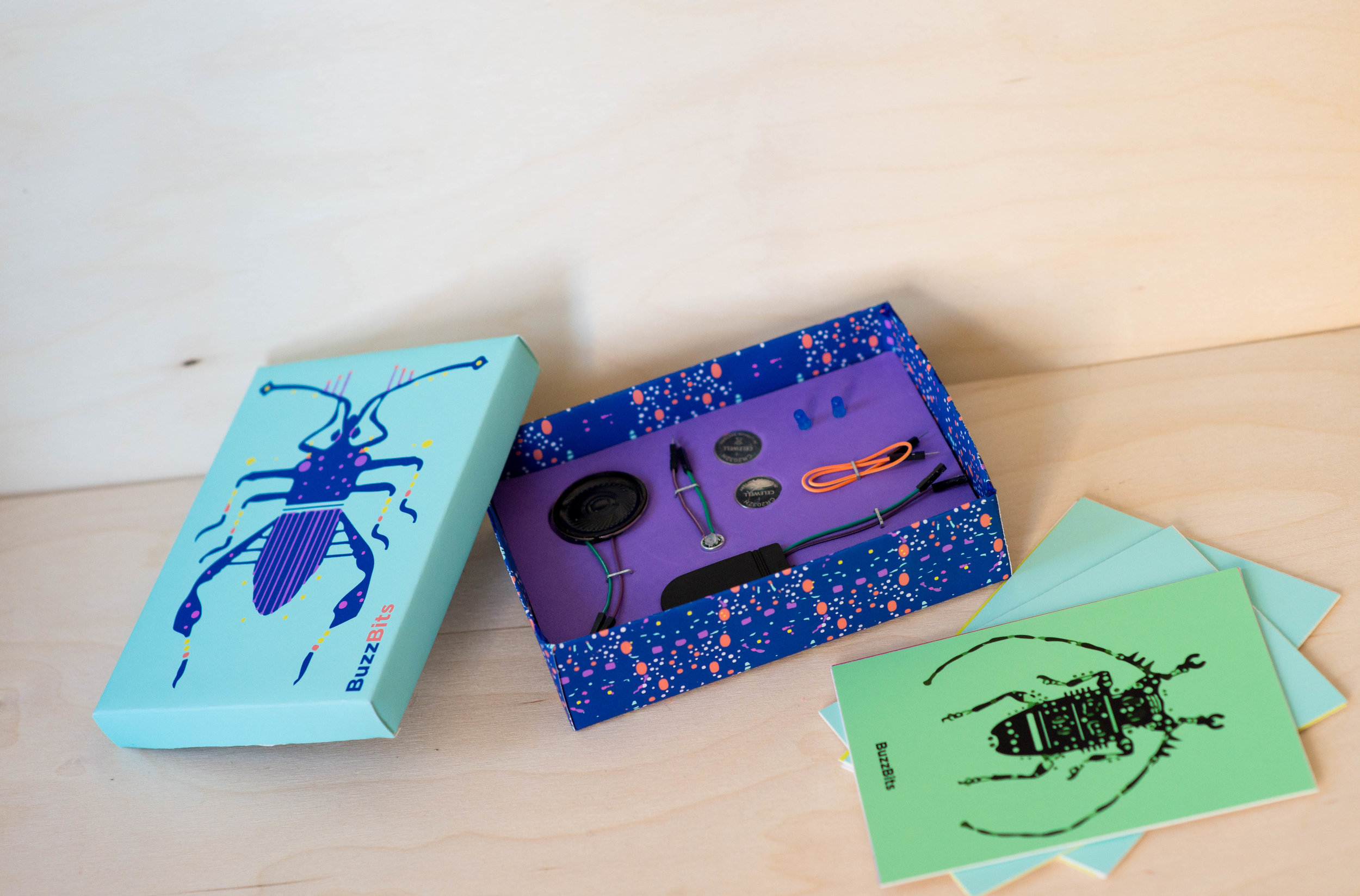What if kids in underserved communities could make tech-toys?
Technological changes have shaped our notions of literacy; active and successful participants in the 21st century global society must be able to navigate proficiently and fluently with the tools of technology (Resnick, 2001). In our digital age, being digitally fluent means not only knowing how to use digital technology, but also knowing how to create things of significance with it (Resnick, 2001). Increasingly nowadays, children are expected to develop technological fluency despite wide variability in the quality of learning opportunities schools provide (Greenhow & Robelia, 2009).
BuzzBits is a robotic construction kit (RCK) consistent of elementary and cheap electronic pieces, that combined with elements from the user's environment, can be assembled to create an electronic insect. The kit is designed for children from 8 to 14 years-old located in underserved communities across the globe that have little to no previous interaction with technology. The kit will be distributed (more information on the research paper) in rural, marginal, or displaced communities to be used by kids outside their schools. A typical learning context would be the street, at home, or in any recreational environment they may use. The ultimate learning goal of the kit is to enhance in these children a proactive and challenging attitude toward technology that can be synthesized in the expression: – I can make technology! –.
MA project for Tools and Toys class.
Illustrations by Tano Verón.
The packaging of the kit is contains two essential parts: a set of electronic components and a set of guiding cards. In addition, in order to make the electronic insects, children will have to add a third group of components: basic and recyclable elements that they can easily access in their environment.
The cards enhance the key function of scaffolding the explorative learning process. They have on the front face an illustration of an insect and on the back face a graphic depiction of the resulting artifact and its components.
Each electronic kit has all the necessary components to generate a basic closed electric circuit made up of one energy source, conductive wires, and three output devices. Children can activate a working closed circuit with these elements.
Cards are designed only using only graphic language in order to access a diverse audience of children with different languages and even without reading literacy.
Each insect uses a different output and has a specific function that is going to be the main goal of the construction process, for instance, light-up, make sounds, or move around.
- Greenhow, C., & Robelia, B. (2009). Informal learning and identity formation in online social networks. Learning, Media and Technology, 34(2), 119–140. https://doi.org/10.1080/17439880902923580
- Resnick, M. (2001). Revolutionizing learning in the digital age. In The internet and the university: Forum 2001 (pp. 45–64).





